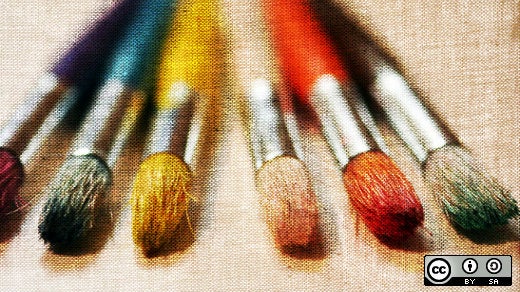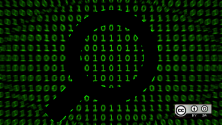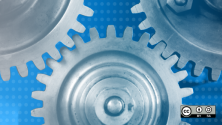Nick Hamilton is a sys admin by day, but is secretly (or maybe not so secretly; it's on the Internet) also an artist. He has worked with several high-end graphics applications, and like many artists with demanding tastes in their toolset, ended up in awe over the myriad features and full-on flexibility of Krita.
He'll be giving an introduction to Krita at the Linuxfest Northwest 2016 conference, so I asked him a few questions prior to his talk about his experience so far with the truly spectacular open source digital painting application.

What attracted you to Krita?
Krita is great because it allows you to create a comfortable space where you have the tools you need to get creative, but the freedom to forget about those for a while and just draw.
Krita's a digital painting application and everyone raves about it, but what makes it different from applications like GIMP or even something basic like Pinta?
The thing that sets Krita apart for me is customization. In addition to being able to reconfigure everything about the user interface to match my equipment setup and workflow, I can also reconfigure the unique pop-up pallet to hold my favorite brushes. Brushes which I can create using a ridiculously detailed and granular brush customization tool powered by Krita's powerful brush engines.
Wait, you make art on Linux? I heard that was impossible.
Absolutely! Krita is just one of a bunch of amazing open source art tools, many of which have completely different artistic focuses, like Blender for 3D modeling or Inkscape for vector art.
I can't draw and I've never painted. What are my chances of producing anything interesting with Krita?
If I gave you a bag full of brushes, waterguns, rollers, a shotgun, and a chainsaw, with all the paint you could ever want and then pointed you at a canvas, I'm pretty sure whatever you came up with would be pretty interesting. Krita gives you that kind of freedom along with filters, layer blending modes, and textured brushes that can make each swipe of the stylus or click of the mouse unique.
I opened Krita once and it seems complex. How scared should I be?
Not at all! Any new program like Krita is going to have a ton of options, tools, and concepts that you may have to learn before you can get really productive or to make those really cool effects that sets digital art apart. But it's really quick and easy to just start painting in Krita. Plus, the Krita community has provided some amazing documentation including a getting started guide that goes over a lot of the basics of breaking into digital painting.
I gather you weren't trained on this software when you went to art school. Should Krita and other open source art applications be taught in schools?
Definitely! Exposure to Linux and the open source communities opens a whole new world of opportunities to students that is independent of social status or financial ability. A lot of programs have student versions that you can use for practicing, or schools will get a group rate on licenses for programs, but any artwork made on either of those versions doesn't belong to you and can't be used for any sort of financial gain. Teaching with Krita or similar programs would empower the students to create artwork, game assets, or whatever that they truly own the rights to.
What's your personal Krita workflow?
I like to start in Krita and just see where the brushes take me. It's much easer to conceptualize and make quick revisions to a sketch when working digitally.
Honestly, I'm still a newbie with digital painting though, so I'm really excited to start trying out different types of workflows. I've been watching a lot of speed painting videos on youtube lately, there are quite a few dedicated to making art in Krita, and there are some really interesting styles that can be achieved just from changing up your workflow.







3 Comments